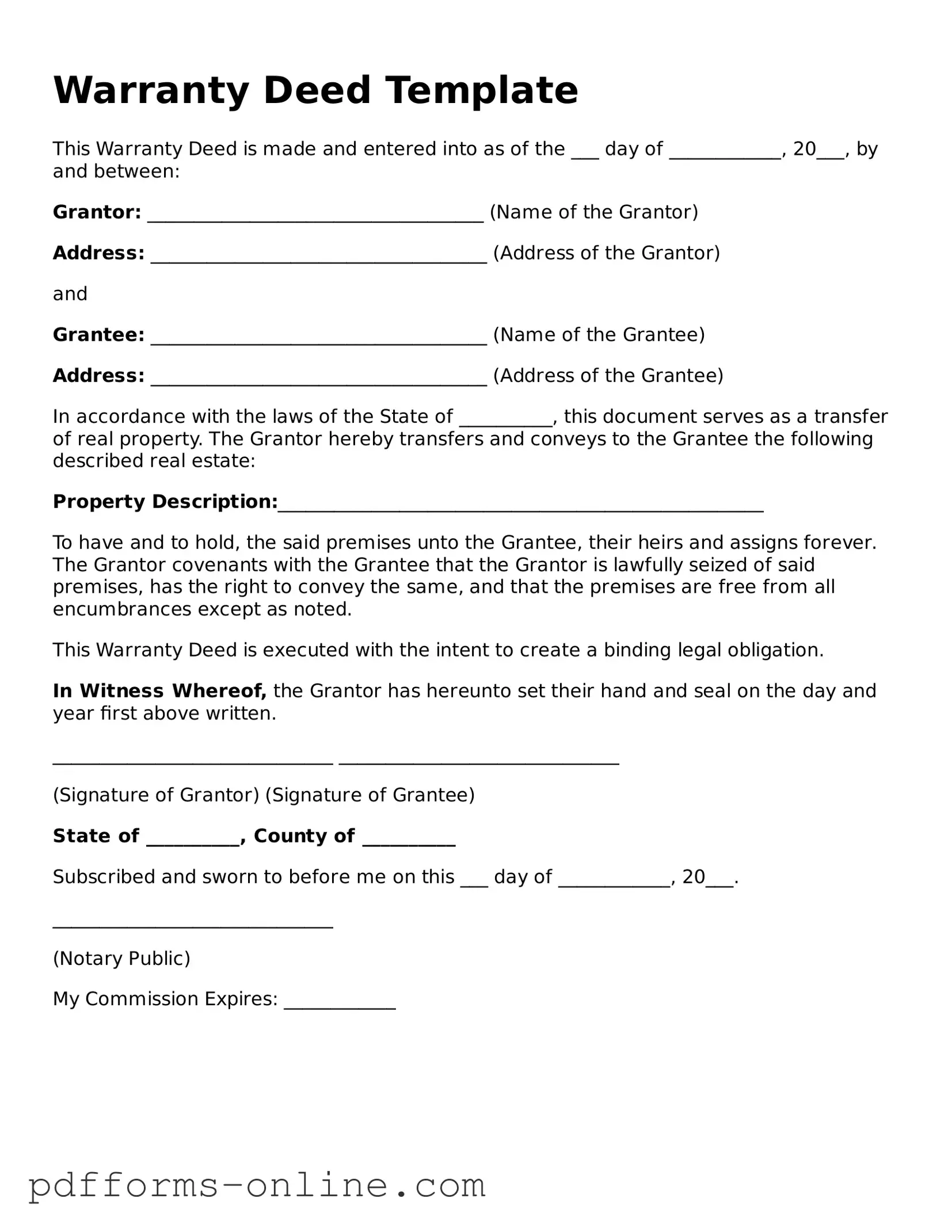Warranty Deed Template
This Warranty Deed is made and entered into as of the ___ day of ____________, 20___, by and between:
Grantor: ____________________________________ (Name of the Grantor)
Address: ____________________________________ (Address of the Grantor)
and
Grantee: ____________________________________ (Name of the Grantee)
Address: ____________________________________ (Address of the Grantee)
In accordance with the laws of the State of __________, this document serves as a transfer of real property. The Grantor hereby transfers and conveys to the Grantee the following described real estate:
Property Description:____________________________________________________
To have and to hold, the said premises unto the Grantee, their heirs and assigns forever. The Grantor covenants with the Grantee that the Grantor is lawfully seized of said premises, has the right to convey the same, and that the premises are free from all encumbrances except as noted.
This Warranty Deed is executed with the intent to create a binding legal obligation.
In Witness Whereof, the Grantor has hereunto set their hand and seal on the day and year first above written.
______________________________ ______________________________
(Signature of Grantor) (Signature of Grantee)
State of __________, County of __________
Subscribed and sworn to before me on this ___ day of ____________, 20___.
______________________________
(Notary Public)
My Commission Expires: ____________
